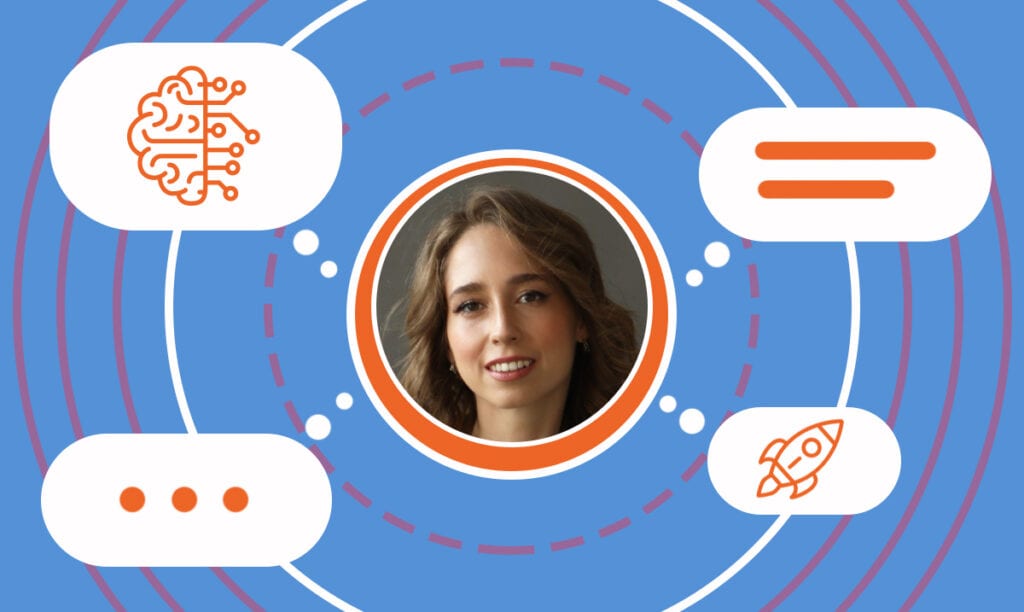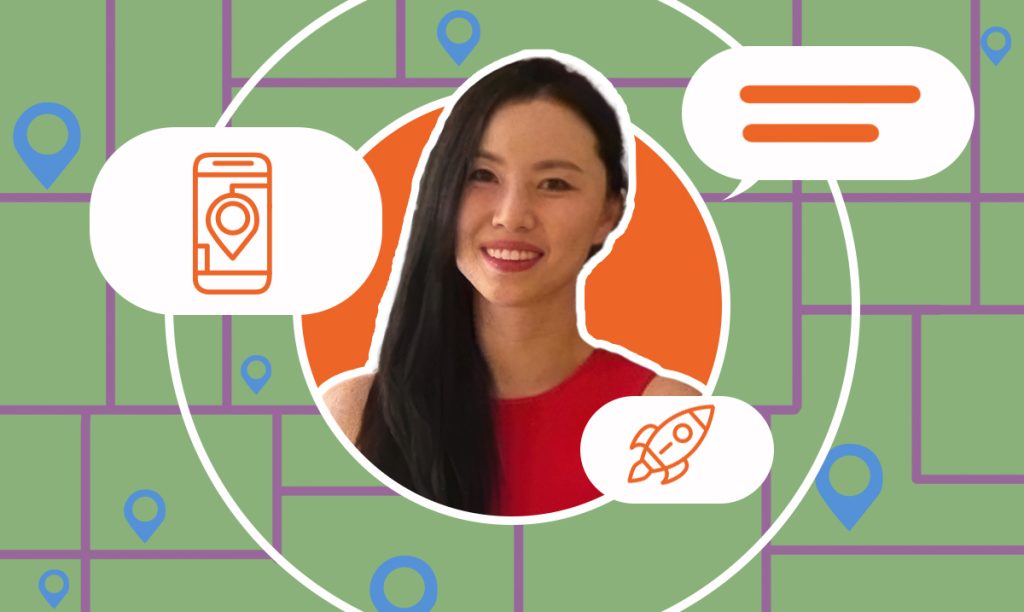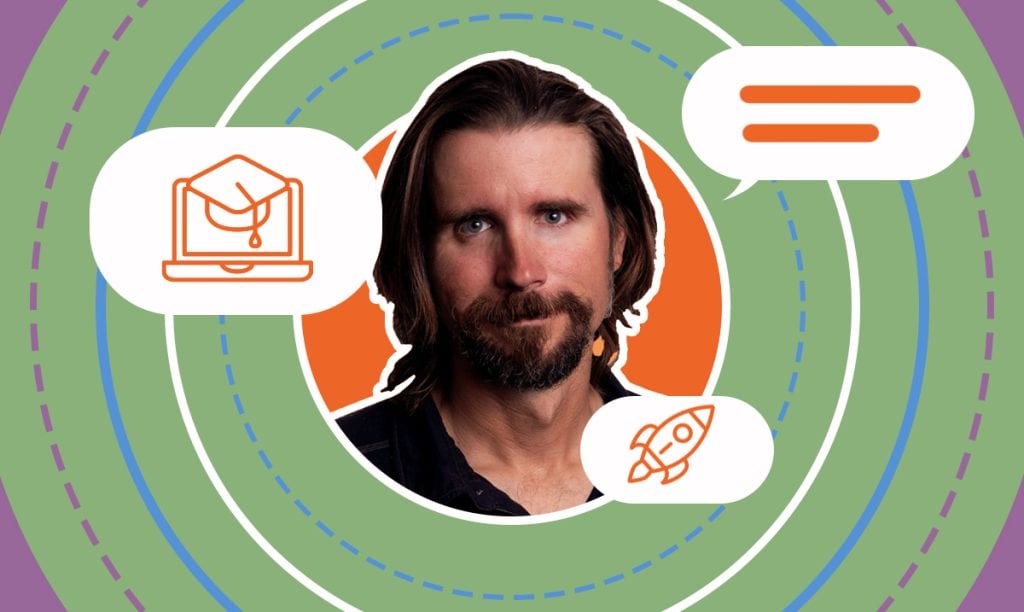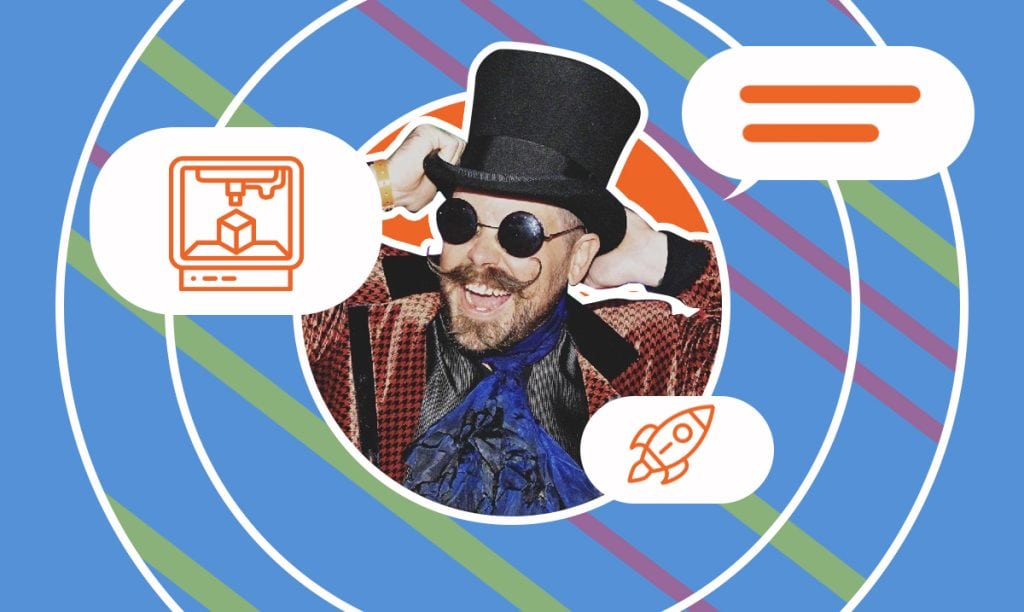In this interview, we sit down with Nan Zhou, co-founder of No Code Map App, to discuss how she and her team transformed a trip-planning mapinterfac ...
Incymo Transforms How Companies Connect with Their Clients
Written by: Howard Tillerman
Howard Tillerman is the Chief Marketing Officer for Step By Step Business and an award-winning marketing professional.
Published on March 6, 2024

Meet Anna Zdorenko, the founder & CEO of Incymo.ai, who is revolutionizing the gaming and AI industries. In this interview, Anna shares her unique journey, revealing the challenges and triumphs of building a tech startup. Her innovative approach to AI-driven marketing is not just a business success story but a roadmap for aspiring entrepreneurs.
Get ready to be inspired by Anna’s vision and determination, which are reshaping the future of digital marketing and monetization in the gaming world.
The Genesis of Incymo AI
SBS – What led you to the creation of Incymo AI?
Anna – The name of my company, Incymo AI, is the abbreviation for “increase your monetization.”
After I graduated from the Technical University in 2015, I started doing courses with Intel to help engineers become entrepreneurs like I was. During this course, I created my first startup — a smart feeder for pets. We developed hardware and did electronics and programming. I worked at my regular job and did programming at night.
We started making first sales, built MVP, attracted investments, and realized it’s so hard for just-graduated people to fundraise for hardware. We had to fundraise tens of millions for production in China (we even found a factory to help us with production). By the way, that’s when I met my husband, and that’s how our life journey began. After this startup ecosystem, he switched from an engineer to an entrepreneur. He opened one of the biggest venture ecosystem companies, and they have done hundreds of accelerators already.
During these accelerators, I started to consult startups and help them pass the most difficult journey from zero to one. I consulted over 100 startups, and one of them even made an M&A with Grafana, a big corporation. Around 20% of them fundraised and continued to build, found their customers, and increased revenue.
One of the startups I consulted created the next iteration of my previous startup. It was a smart toilet for pets. I even wrote technical documentation on how it should work, and they just replaced it five years later. It was one of the best products in that niche in the world. Because of good production, it didn’t have any bugs, and it was a sign for me that it was time to do something next. That’s how I started generating ideas about what I could do.
I tried finding co-founders, but none of them was a match since they were without a deep belief that the idea would be great or a unicorn. Because of my experience and understanding of how the venture capital world works, I knew the three main things I needed to find: the biggest problem in the market, the market big enough to build a unicorn, and the dream team that could handle all of this. So, I started searching for mentors — big entrepreneurs who could help me with a problem. One of them was the founder of a gaming holding company. He also had a lot of experience in advertising, and he told me that there are vast amounts of data in games, and they don’t use it properly.
While working in my daily jobs, one of my experiences was as a product manager, where I integrated machine learning algorithms into online banking processes. That’s how I knew we increased revenue by $2 million per month.
I bought a ticket to Cyprus (that’s when I came here for the first time) because there is a huge number of gaming holdings. I met with the owners and game producers, who confirmed it’s too complicated. They don’t have enough time or money to hire a team of data scientists who understand games and can handle that volume of data.
Through the network, I found my first client. I fundraised 500k and started building this product. Last year was very difficult in terms of fundraising and surviving. One of my clients asked for our prediction models for marketing, and I started talking to marketing managers. They told me they didn’t need prediction models so much because big corporations were integrating their systems, middle corporations were creating the systems by themselves, and small companies didn’t need them at all. But all of them were struggling with creating performing ads!
It was super insightful because in the industry, you have to create 100 ads and pay for production, testing, and marketing, and only one performs well enough for you to scale your business. After that, even when you find this performing ad, you don’t know how to replicate it, systematically find performance, and not pay so much for this process.
In that network, I found the co-founder who has been solving this problem for the last seven years. He was creating video ads for games by himself and struggled with the same problem. He tested hundreds of videos, and they didn’t perform well in a systematic way, so he started building a methodology on how to properly take the main elements of video ads, combine them, and properly test them to get the right data about which ideas or elements perform and how to find these performing ideas iteratively and finally systematically find performing ads. That’s how we started to work together.
My other co-founder has built AI solutions for businesses for nine years. One of his past businesses, Y Combinator, built a computer vision ecosystem for documents of big corporations in the world. Three years ago, he started building his next venture, creating a platform for creating and optimizing ads. Can you imagine? It was just the right moment, and I thank the universe for the brilliant team that can solve this problem.
We started building our platform together and increased revenue because our algorithm helped our clients systematically decrease the cost per install. It was very important, and it helped us to survive last year. That’s how we built more cases for our first startup.
Now, we have two products, one for in-game personalization and the other for AI-driven ads, and they increase the revenue profit of all our clients. I’m super confident in what we built. We just had to find more time this month to prove it works. It’s amazing because, once integrated, you see how your lifetime value (LTV) and revenue are growing, and you don’t need to do anything. I like this approach, and our company is called Incymo because I like to help people increase their monetization. They need to spend time working on their businesses, building great products, and enjoying their customers, and we can help with other stuff — increasing their product metrics like LTV and marketing. Those are two major pain points of any business — how to acquire cheaper and how to earn more — and our two products prove that they can do both parts.
We are finishing our self-serve solution, our second platform, SmartUA, and we will scale it. You need to put a business description, click a button, and get as many ad creatives as you want. It’s amazing!
SBS – Why did you decide to go to Cyprus to look for game owners?
Anna – If you’re a startup founder or entrepreneur who doesn’t know the market, you should talk to experts from the market. I knew this personally because I came from exploring many startups and talking to different experts. They told me that there are large numbers of gaming companies, specifically in Cyprus, and even this year, one of my friends from the US mentioned that he checked a data analytics platform for different games and found that three out of ten top worldwide game companies are in Cyprus. This is because C-level leaders like it here because of a good tax regime and good weather.
Strategies for Success
SBS – What strategies do you use to gain new customers and retain old ones?
Anna – When it comes to the existing clients, I was surprised to find out that we have 100% retention for our first client, our first product, and the second product for clients that had 48 creatives with us. We must move forward with our products because they help each other and are for the same clients and industry.
I’m attracting clients at different conferences, too. I’m going to Istanbul, where the Google Gaming Summit will be held. After that, I’m going to the Game Developers Conference in San Francisco, one of the industry’s biggest conferences. After two and a half years in the industry, I’ve made many friends, and we can connect, negotiate, and move forward with the integrations and tests of our second product.
SBS – Do you believe those conferences work for client acquisition or are they only good for networking?
Anna – B2B sales is a tough and long journey, so conferences work — you start building your relationships there and growing them afterward.
At first, I thought of passing on these conferences, to be honest, but I realized I have brilliant products that help all our customers, and conferences are a chance to meet more relevant people to talk with.
I don’t have an option to sit in my home. For sure, I can connect via different digital channels like LinkedIn or Facebook, and we do this with all our friends. But I can meet people I wouldn’t meet anywhere else at conferences.
Pioneering AI Algorithms
SBS – Can you tell us more about your AI algorithms and how they stand out in terms of your products?
Anna – Both platforms (smartIn-App and SmartUA) help automatically find the most profitable content.
The first searches for the best prices and content inside the game and choose the best setup for each player. When players get just average propositions, they pay average. But if each of them gets exactly what they need, what they want, and that suits their need, it’s increased because of mass data and general understanding.
We have a similar approach in our SmartUA platform because we also have database data of main ideas that can be included in video ads.
We’ve also built a self-serve solution for image and animated ads for the non-gaming market, and it tracks the data, what users click on, CTRs, cost per install, and what impressions creatives got. Based on this data, our algorithm analyzes which ideas, pictures, or game mechanics work better. We test with small portions with small budgets, analyze and iterate. We improve performance and understanding based on data about the particular games and the industry and can see what works and what doesn’t. Then, we don’t need to spend money on these non-working ideas anymore. That’s a big problem for other companies that don’t use such a system and pay for ideas that don’t work and can’t be measured.
In-App Monetization
SBS – How does your service include in-app monetization?
Anna – We have the integration with our game clients. They send us information about their users — from which country, device, and marketing channel they arrived, how they spend their time in games, and how often they win, lose, or buy something. So, we get data about user behavior all the time. That’s how we analyze and train for specific game sending, like what type of price grid you must show to this user or what content you have to pop up in an offer. After that, we get data about whether that user bought something and whether they came back. We are measuring the conversion and all the LTV from the beginning of the journey.
Our key metric here is cumulative RPU over three or six months and how much money you will earn in total. In this metric, there is retention (how long people stay with the game) and a general amount of user payments.
Adapting to the Future
SBS – How do you plan to evolve according to changing market needs?
Anna – We are working with human behavior, with the basics of how the world works. That’s why for our smartIn-App platform, we need to grow. All our clients can recommend us to others (and they do). We started getting more clients from our previous customer’s feedback. They’ve been working with us for more than a year. As I mentioned, I’m confident in what we are doing. We need to integrate more games and help clients earn more, survive like we survived last year, and create more interesting games, ideas, visuals, and stories.
And for the SmartUA, we’re aligning with trends because it’s also about AI-generated content. For the last three years, my co-founder has been building it in terms of algorithms, computer vision analysis, and other stuff. That platform has been gaining great value from using all this automatical analysis for generation.
You don’t need to put so much effort into production. You just need to describe what you are doing and what your business is about, click a button, and get production-ready versions of your creatives — hundreds of their potential combinations in terms of visuals, titles, descriptions, and calls to action. That’s how our platform automatically analyzes hundreds, thousands, or, for our last client, even millions of potential combinations with the cheapest budget. It searches the patterns and improves automatically for you, so you don’t need to spend much time analyzing what’s working there, how to create what, how to localize, etc. Everything is inside our platform. We integrated all the best solutions with great prices, core analysis basics, and help with this automation.
Overcoming Business Challenges
SBS – What challenges did you face in your business, apart from the last year, which you said was a tough time?
Anna – In general, the entrepreneurial journey is so difficult. You have ups and downs all the time. You’re stressed, and it’s great when you have great co-founders.
Last week, I was so upset because after the launch of our new version of the platform, we got new bugs we didn’t expect, and the first client I showed a demo to saw these bugs and wondered how it was possible because we never had these problems. We did a demo one more time. You’re always working and improving, and when you see that something doesn’t work, it’s frustrating. But after that, I called my co-founder. Usually, we don’t phone each other too much because we have so many tasks to do, especially after last year.
We negotiated our strategy, our ideal client profiles, what we had already gone through, and our advantages among other products on the market. We have to focus on the target, and that talk was so helpful. I realized that everything was great. We’ve been through a long journey, and we have brilliant products; we have to finish these small things, and after that, it will be all right, and we’ll grow faster. I even wrote to him after that.
I’m so happy he’s my co-founder because getting such support was great for me. You sometimes need someone to show you everything is all right.
Long-Term Goals and Growth
SBS – What are your long-term goals for Incymo? How do you see yourself in a couple of years?
Anna – I built a unicorn from the beginning. I was thinking about a big problem, a market, and a dream team. As we can see, the dream team is not only about experience and technical skills. It’s also about the communication part. Before, I had another co-founder with a not-so-great communication part, and I was struggling to communicate with him. The whole team was struggling. When we said “Goodbye” to each other, it became much easier, and we started building faster and more effectively. You can’t survive with toxic people during your journey because you have so much trouble that surrounds you already.
I opened the company in Delaware and found the brilliant lawyer who helped me from the beginning of our journey, and we’re now building a product that our clients love. Our main goal is to build a product that all our clients love (or at least our ideal customer profile clients). After that, as soon as we are sure everything is all right, we can scale it, acquire PR, and engage in many public activities to become the biggest market leader in AI algorithms for the gaming industry, increasing the profit of game developers.
Insights for Aspiring AI Entrepreneurs
SBS – What advice do you have for future entrepreneurs in the AI field?
Anna – What helped me was that I started talking with big entrepreneurs. If they have many businesses, they have a helicopter view and understanding of what can be improved in the market.
Usually, there are two options. The first is when you have your problem. That happened with one of the co-founders. He has been working with video ads for games. He struggled and started solving this problem. If it’s impossible to solve the problem on your own, the second option is to talk with experts and ask them what they think can be solved in the industry. You can also talk to people who work in this industry, like people connectors or coaches.
First, you have to find a problem, not an idea. After that, measure how big this problem is and how big the market for this problem is.
With AI-related businesses, you must understand whether you want to build a unicorn or a small, profitable IT business. In terms of AI startups at this moment, most of them are not startups. Most of them are businesses, digital businesses.
What’s the difference?
When you’re building a startup, you have very high potential growth because you have unique technology, a unique business model, and something that can help you to grow fast. Current AI businesses mostly use ChatGPT or another technology and make something around it without deep technologies, values, or advantages. And it’s okay; it can be a profitable business, and you can earn a lot of money. Just do it!
Don’t think about it as a startup. Build a business, grow, earn money, reinvest. In this case, you don’t need to go to investors because they will tell you it’s not competitive and won’t make it. Don’t listen to them. Just build your own business.
Also, talk to people. That’s how our second product, SmartUA, came to be — because our client asked us for prediction models. But if I didn’t talk with other marketing managers who told me they didn’t need marketing prediction models because they have them internally. I wouldn’t know there was another problem. They pointed it out, and I’m so thankful they did. This problem was everywhere.
I remember talking to more than 100 marketing managers and realizing the problem was huge. For sure, the main job of the founder is to talk to people, understand real pain points, and understand their environment.
Subscribe to Our Newsletter
and gain insider access to cutting-edge business insights and trends.
Featured Resources

How No Code Map App Delivers Custom Maps Without Coding
Published on April 3, 2025
Read Now

How LifterLMS Simplifies Online Course Creation for Educators
Published on February 27, 2025
Online education is booming, but creating and scaling a successful course can be challenging without the right tools. That’s where LifterLMS comes ...
Read Now

How Jinxbot Leads Zero-Waste 3D Printing
Published on January 14, 2025
Jason Reynolds, founder of Jinxbot and co-founder of the zero-waste nonprofit PrintCycle, is leading the charge. With a passion for innovation anden ...
Read Now
Comments